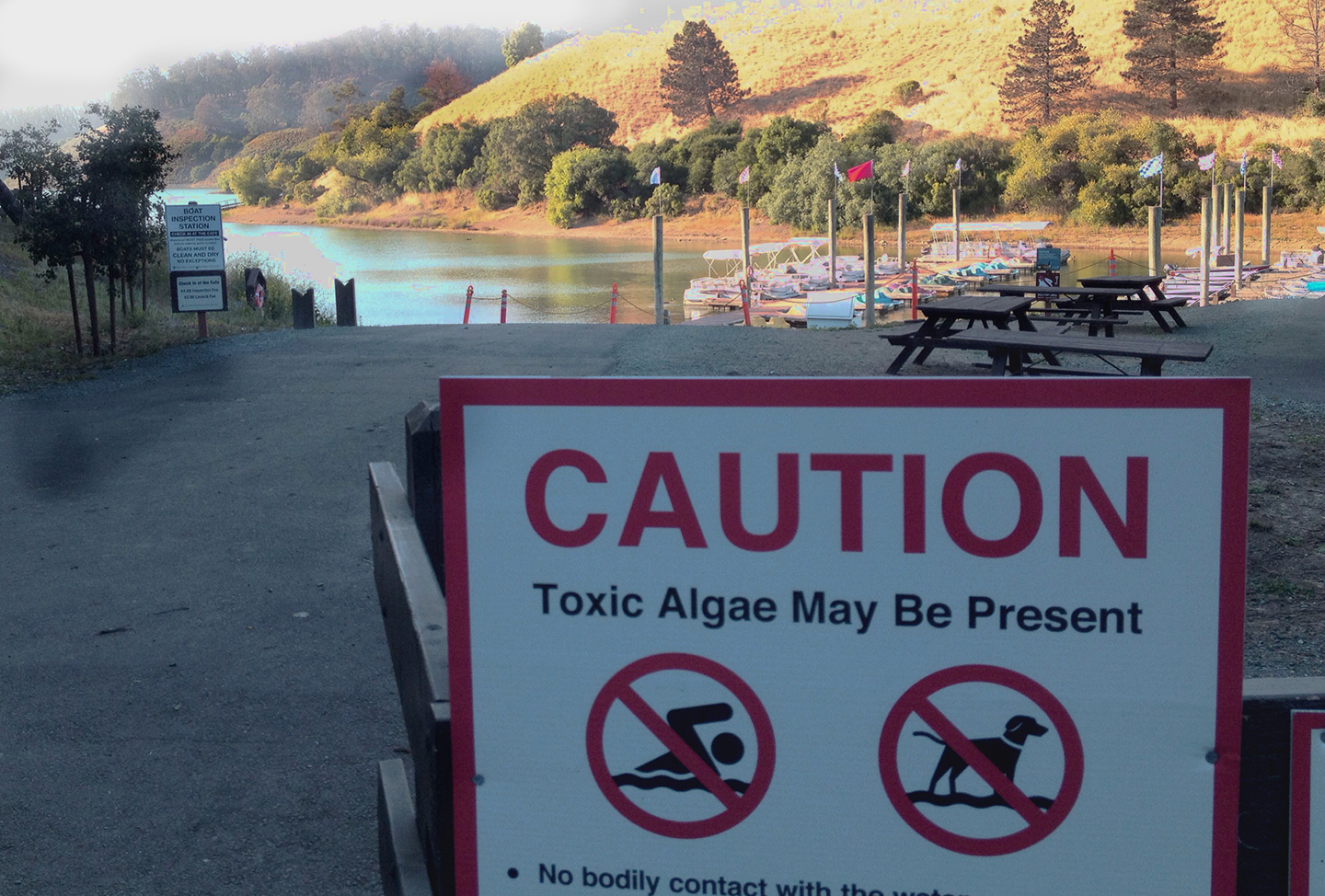Deadly algae bloom kills three dogs at Lake Chabot

Algae bloom is defined as a rapid increase or growth of algae in a water system and mostly occurs in freshwater and marine environments. Algae blooms can be caused by warm, slow-moving waters that are rich in nutrients. Blooms can occur at any time, but are most common in late summer or early fall. The type of algae bloom found in the lake is cyanobacteria, also known as blue-green algae blooms, which in some cases can carry harmful toxins.
According to the East Bay Regional Park District, the toxins in the algae are most likely due to the drought.
“Because we haven’t had a lot of rain, the stagnant lake is perfect conditions for algae growth,” said Carolyn Jones, the park district spokesperson.
There have been reports of the toxic algae in other lakes around the state as well. The park district strongly recommends that people and dogs should not make any contact with the water in Lake Chabot. Mild exposure can cause slight side effects, but high levels of exposure can lead to serious illness, or, in some cases, death.
“The solute to solvent ratio in most freshwater is high, but with the drought the amount of solvent water decreases, leaving more of the solute in the water possibly increasing the toxins,” said AP Environmental Science teacher Nathan McCreary.
McCreary also speculated about how poisonous the toxins could be in order to kill dogs.
“To kill a large dog would take a lot [of toxins], maybe if the dogs drank the water, the type of toxin can’t be easily broken down by the stomach acids. They could be neurotoxic,” he said.
McCreary agrees with the park district and believes that the sudden growth of the blue-green algae is most likely due to the drought in California, stating, “The statewide problems with the toxic algae are most likely a by-product of the drought.”
The algae in Lake Chabot could be here for a while.
“We are letting nature run its course. Because Lake Chabot is such a large lake and is a backup water supply for emergencies, we don’t want to chemically treat it,” said Jones.
When asked about what the park is doing to warn people, Jones replied, “We are trying to get it all over the Internet. We also posted a bunch of signs, and we have staff on site to verbally warn people. On busy weekends we will send extra staff in boats on the lake to make sure that everyone is safe.”
Jones also made it very clear that dogs and people should not be in Lake Chabot anyways because it is a water reserve.
Hopefully with more rain the algae will go away, and Lake Chabot will be restored to its former glory.

